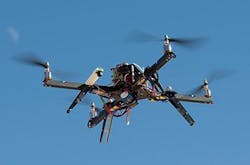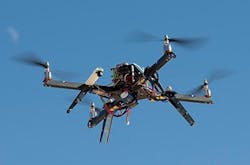FAA approves first commercial UAS flights over land
WASHINGTON, 12 June 2014. Federal Aviation Administration (FAA) officials have approved unmanned aircraft systems (UAS) manufacturer AeroVironment and energy corporation BP to fly an AeroVironment Puma AE to perform aerial surveys in Alaska, marking the first time the FAA has authorized commercial UAS operation over land.
Specifically, the FAA issued a Certificate of Waiver or Authorization to survey BP pipelines, roads, and equipment at Prudhoe Bay, Alaska--the largest oilfield in the United States. AeroVironment performed the first flight for BP on 8 June 2014.
“These surveys on Alaska’s North Slope are another important step toward broader commercial use of unmanned aircraft,” U.S. Transportation Secretary Anthony Foxx says. “The technology is quickly changing, and the opportunities are growing.”
The small, hand-launched Puma AE UAS measures roughly 4 1/2 feet long and has a wingspan of 9 feet.
Using the information generated by the Puma’s sensors, BP hopes to target maintenance activities on specific roads and infrastructure, which will save time and support safety and operational reliability goals, while helping to protect the sensitive North Slope environment.
Last summer, the FAA issued restricted category type certificates to the Puma and Insitu’s Scan Eagle, another small UAS. The certificates were limited to aerial surveillance only over Arctic waters. The FAA recently modified the data sheet of the Puma’s restricted category type certificate to allow operations over land after AeroVironment showed that the Puma could perform such flights safely.
“The 2012 Reauthorization law tasks us with integrating small UAS in the Arctic on a permanent basis,” FAA Administrator Michael Huerta explains. “This operation will help us accomplish the goal set for us by Congress.”
UAS image courtesy of Shutterstock.


